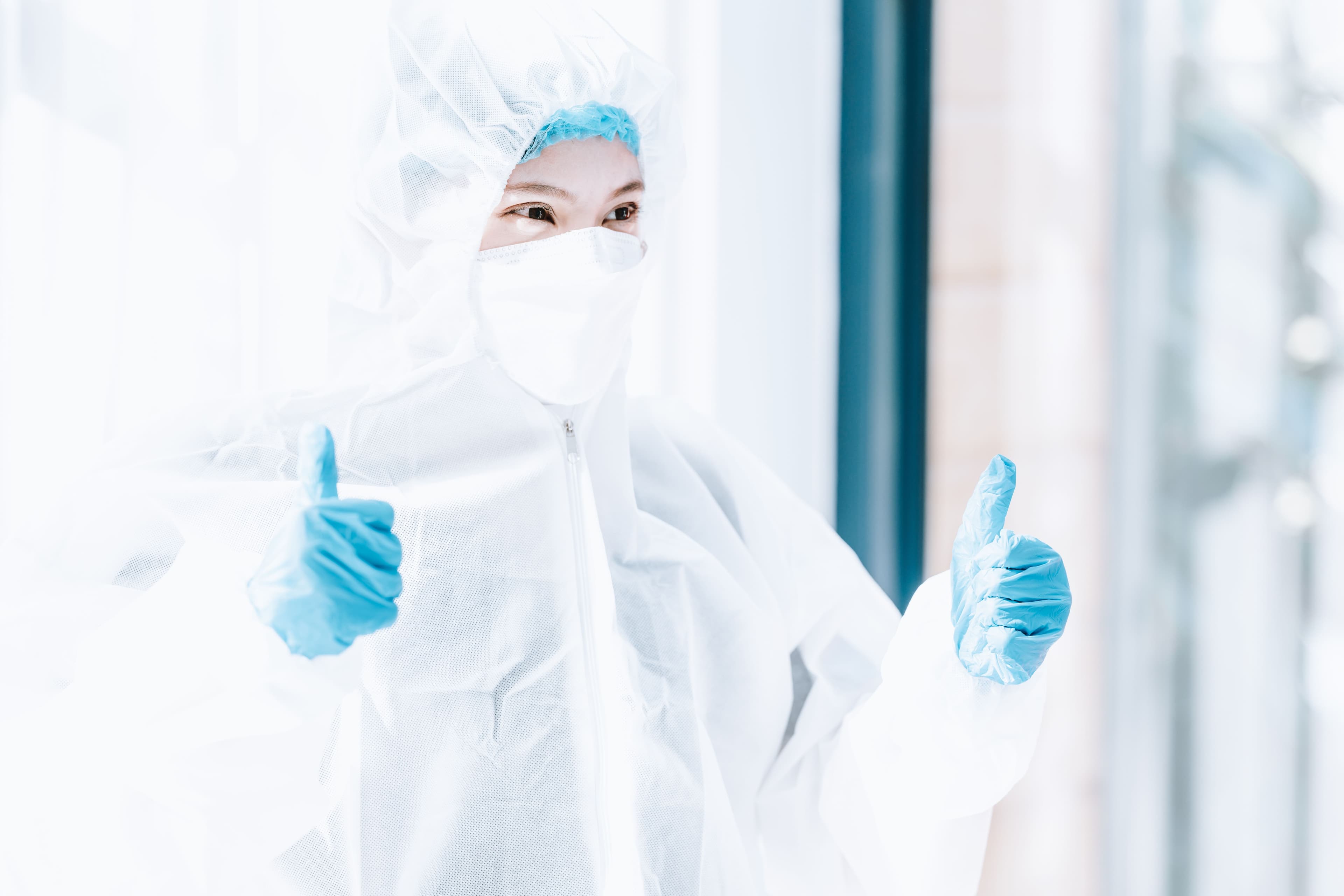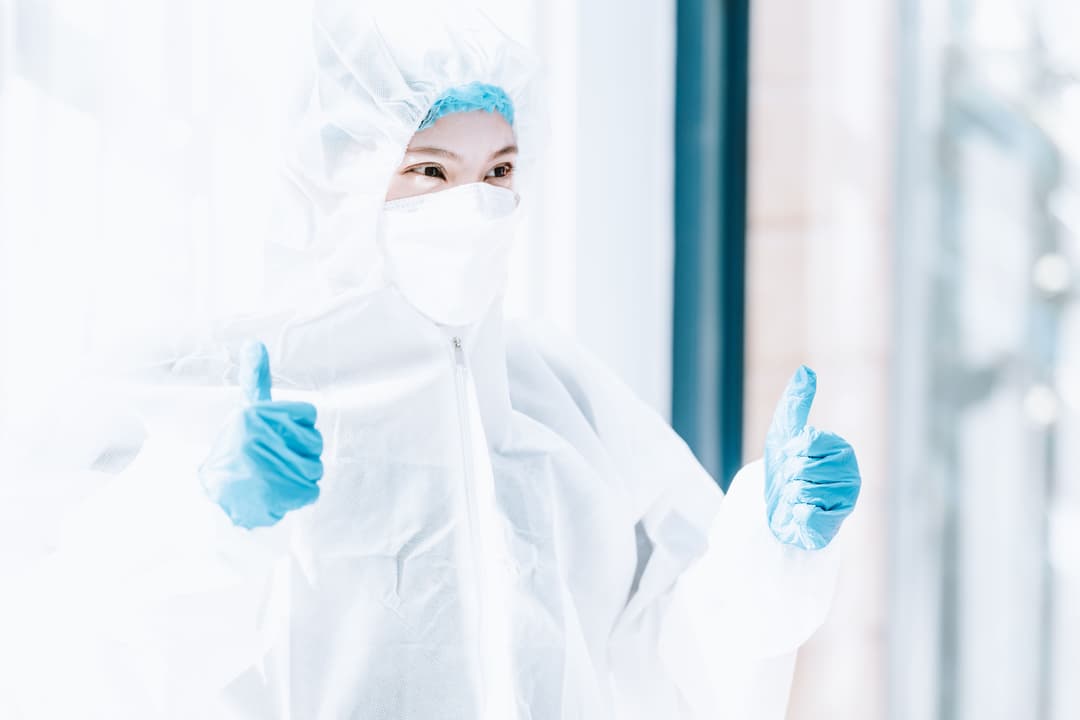

The green dilemma: disposable or reusable gowning?
The green dilemma: disposable or reusable gowning?
Of course, a lot depends on the category – the requirements for cleanrooms up to ISO 8 are very different from the more stringent ISO 6 and above.
Several of the presentations at the recent Cleanroom Technology Conference presented a wealth of evidence to help inform manufacturers’ decision making, not least ones by Steve Marnach from Dupont, Jo Fabb from Ansell and Arthur Lettinga from our partner organisation Elis, with whom we offer gowning hire and laundry services.
Making the right choices for your ISO rated Cleanroom PPE
It is a well-known fact that operators represent the highest contamination risk inside ISO rated cleanrooms – and despite the rise of robotics and automation, there are many industries which still need a real person on the inside. And that is why PPE plays such a pivotal role in their operation:
- preventing (or minimising risk of) contamination in the production environment and its processes
- ensuring product integrity (and so patient safety)
- safeguarding the wellbeing of cleanroom personnel
- securing regulatory compliance, and crucially –
- protecting financial stability against the potential losses causes by failures.
During Ansell’s talk, Jo highlighted the risks of incorrect PPE choices - from requiring recalls, to causing injuries and even consumer deaths.
She cited one case where inadequate gowning and improper use of sterile PPE had led to an outbreak of fungal meningitis in patients taking steroid injections, resulting in 64 deaths.
In another case, particle contamination of an injectable drug was caused by fibre shedding from gowns due to weak seams and low-grade fabric which led to 100,000 product vial recalls and serious impact on the manufacturer’s reputation.
The key guide to the choice of PPE can be found in GMP Annex 1 (part 7)where the standards clearly state that garments must protect the product from contamination, be appropriate for the cleanroom grade, be checked for integrity and sterility and be qualified through testing and routine replacement.
Sterilisation methods for reusables
For any ISO rated cleanroom operator who has decided that reusables are the best option for their process, their next step is selecting the most appropriate sterilisation process for their PPE.
In the presentation by our partner organisation Elis, with whom we offer gowning hire and laundry services, Arthur Lettinga reflected on the various sterilisation methods.
He started by clarifying a common misconception in terminology:
Sterile means nearly all microorganisms (bacteria viruses and spores) are destroyed (Log-6 reduction), while
Aseptic involves reducing contamination risks through controlled processes: contamination can still occur if any part of the process isn’t sterile
For cleanroom apparel, the requirement is generally sterilisation, and can involve the following methods:
- Autoclaving (Heat): a safe, cost-effective, and CSR-friendly technique (fewer CO2 emissions and longer textile lifecycle), often carried out on site, although clearly unsuitable for heat-sensitive fabrics.
- Gamma Irradiation (Radiation): no heat or moisture, and no handling of goods in primary, sterile package (sterilisation takes place in the transport package). However, can be costly, less flexible, and can degrade textile quality as well as being less sustainable. The process itself tends to take longer than autoclaving – and that is without allowing for transport time as this method rarely happens on site. It is also unsuitable for RFID chips.
- Ethylene Oxide (ETO, Chemical): gentle on fabrics and elastics, and suitable for a broad range of products. A CSR-friendly option that offers deep penetration, but toxic, flammable, time-consuming and rarely available on site, as well as carrying a potential risk of residue.
Obviously, the sterilisation method chosen impacts costs (not least because it affects the life of the product) – and this translates into sustainability, as when textiles have that longer life, they offer a better carbon footprint with less CO2 emissions.
A change of emphasis
In DuPont’s talk, Steve explained the change of emphasis in the latest documentation which requires a more proactive, wholistic, risk-based and data-driven process validation to PPE.
Given that human beings simply cannot stop shedding particles (skin cells etc.), and that there are literally millions of micro-organisms living on every cm2 of human skin, the cleanroom gown essentially becomes a filter.
The challenge is how to ensure that this ‘filter’ is as efficient as possible in preventing contamination resulting from leakage/shedding of matter from human operatives – and to do that by testing, not only what the contamination is, but where it has come from in the first place.
It is also possible that the cleanroom wear itself brings potential contaminants into the work environment: these can come from its fabric, the design (closures, seam construction etc) and is affected by factors such as how many times it has been washed, dried and sterilised as well as by how it is packaged and the delivery process.
One well respected system for monitoring this type of ‘shedding’ is the Helmke Drum Test – and Steve made the point that, in an ideal world, a certificate of compliance from this test would be provided with each batch of cleanroom wear sent for reprocessing.
However, the only method that enables both human and material particles to be tested at the same time is the ‘body box’. (This is something the CCN has just invested in – watch this space for a future blog…)
While efficacy is clearly vital – cost also must be considered in any business. And in assessing comparative costs, while single-use may appear more expensive, it’s worth remembering that the costs around laundry, repair and inspection need to be factored in for the reusable choice. There are less obvious elements too, such as catering for the different sizes of cleanroom wear required for your staff, particularly if you have a high turnover of personnel.
And there are efforts being made to address the sustainability issue when disposable is the best option: Ansell have set up their own initiative: ‘RightCycle,’ a service for recycling certain non-hazardous PPE (including nitrile gloves and garments) into eco-friendly products. The only cost to the user is the transport to the nearest recycling centre.
As strong as the weakest link…
Whatever the choice, single use or reusable with sterilisation by whatever method, it must also be remembered that these are not a total solution: contamination risks arise from weak links like proper gowning and cleanroom behaviour, which are equally critical to maintaining sterility.
I found all the presentations insightful – people clearly have a lot of knowledge, and Conferences like this are a great way for our industry to keep up with changes – so important, when things are moving at such a pace. When it comes to the choice between disposables or reusables, it has to be about each individual process – weighing contamination risk against cost and sustainability. It was very interesting to see the research showing that disposable gowns are more efficient at containing human particles. This would suggest that perhaps the higher grades of cleanrooms need to seriously consider using disposables over reusable garments. With our years of expertise, we are always happy to talk these things through with our clients to help them make the informed choice that is right for them.
— Toni HorsfieldContact Toni at ISO Cleanroom by calling 0161 529 2816 or email sales@isocleanroom.co.uk